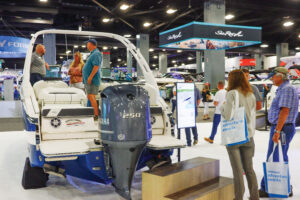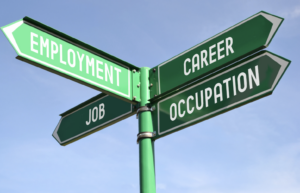
The U.S. economy grew at a 2.2 percent rate in the fourth quarter last year, revised down today from the 2.6 percent clip previously reported.
The actual pace of expansion represents an even more dramatic slowdown from the 3.4 percent growth rate of the third quarter.
The new figures also show how quickly the stimulus faded from President Donald Trump’s $1.5 trillion of tax cuts, which had juiced growth to as high as 4.2 percent in the second quarter, according to The Street.
Half of the American public thinks the economy is in good or excellent shape, according to CNBC — a decline from 58 percent in the third quarter, but still encouraging, said Chad Moutray, chief economist with the National Association of Manufacturers.
“I think the risk of recession this year is about 20 to 25 percent,” Moutray told Trade Only Today. “I don’t think it’s imminent.”
Moutray doesn’t see the Federal Reserve raising rates again until the end of 2020 and expects the housing market to stabilize.
“We’re getting somewhat mixed messages from the markets right now,” said Moutray. “We have really strong job growth, optimism is high when I talk to firms about their overall outlook, but they also have this lingering worry about the global economy, and looking at Germany and China, we’re already seeing materially slower growth than even a couple of months ago.”
Boating is always cyclical in general, said Moutray.
“To the extent that we can continue to see some modest growth in overall economy, I think there’s going to be demand there, perhaps slowing from last year,” said Moutray.
Production on the RV side is returning to normal after manufacturers overproduced last year, said Thom Dammrich, president of the National Marine Manufacturers Association.
“This is good,” said Dammrich. “Housing has been up and down. The reports this week on housing are very good. Housing has been a cloud throughout the past seven years. As long as the other indicators are good and housing isn’t terrible, we are okay.”
The slowing economy and lower energy costs have reduced pressures like inflation growth, which was number two on the list of concerns six months ago, said Moutray. The last time there was significant inflation was in the 1980s, so many Americans don’t remember what that is like, he said.
Wage appreciation and the tight labor market has been the main concern for U.S. manufacturers, said Moutray.
“There are some asking why there isn’t larger wage appreciation, but we’ve already seen it. Non-supervisory production earnings are up about 3.5 percent, whereas the year before it was 2.4 percent, so we’ve seen that rise a percent or more in the last year,” said Moutray.
Occupations such as truck driving have been offering signing bonuses, and Moutray expects that trend to continue.
“For the most part, manufacturing is absorbing it, but that’s why it’s their number-one challenge,” said Moutray.
There are encouraging signs on the tariff front, but NAM would like to see more progress there as well to ease the burden on U.S. manufacturers.
The trade agreement between the U.S., Canada and Mexico is encouraging, but still needs to make it across the finish line. NAM hopes President Trump doesn’t make good on his promise to impose tariffs on auto makers.
Boats are already subject to retaliatory tariffs in Canada, Mexico and the EU.
“The worst thing that can happen is a recession,” said Moutray. “But the good news there is, even if we do have downturn in 2020 or 2021, I don’t expect it to be the Great Recession variety. I think it will probably be a more run-of-the-mill type of downturn. Obviously, tax policy helps as well–I think that helped the economy.”











